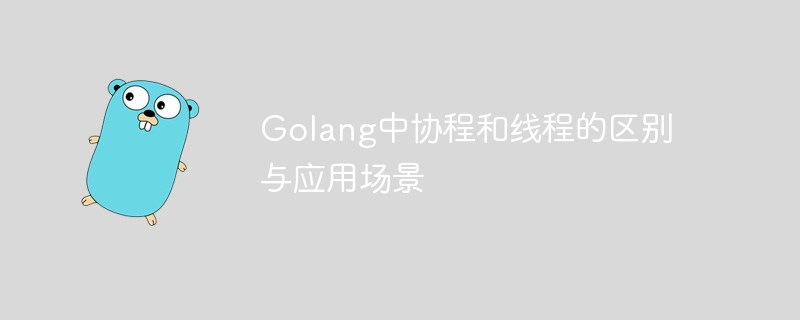

The difference and application scenarios between coroutines and threads in Golang
In Golang, goroutine and thread are two ways of concurrent programming . They have obvious differences in principles and application scenarios. This article will introduce coroutines and threads respectively, and illustrate their differences and application scenarios through specific code examples.
The following is a simple coroutine example:
func main() {
go printHello()
fmt.Println("Main function")
time.Sleep(time.Second)
}
func printHello() {
fmt.Println("Hello, goroutine!")
}In this example, we create a coroutine using the go keywordprintHello (), in the main function, we print "Main function", and then use the time.Sleep() function to wait for 1 second to ensure that the coroutine has enough time to execute. CoroutineprintHello()will print "Hello, goroutine!".
The application scenarios of coroutines are as follows:
The following is a simple thread example:
func main() {
go printHello()
fmt.Println("Main function")
time.Sleep(time.Second)
}
func printHello() {
fmt.Println("Hello, thread!")
}In this example, we create a thread through the go keywordprintHello() , "Hello, thread!" is also printed in the thread, and the result is the same as the previous coroutine example.
The application scenarios of threads are as follows:
To sum up, coroutines and threads have different scheduling mechanisms and application scenarios in Golang. Coroutines are suitable for concurrent processing and non-blocking IO scenarios, while threads are suitable for CPU-intensive and blocking IO scenarios. In actual development, we can reasonably choose to use coroutines or threads according to needs, give full play to their advantages, and improve the performance and scalability of the program.
The above is the detailed content of Similarities, differences and usage scenarios of coroutines and threads in Golang. For more information, please follow other related articles on the PHP Chinese website!
 The difference between static web pages and dynamic web pages
The difference between static web pages and dynamic web pages
 What is the difference between 4g and 5g mobile phones?
What is the difference between 4g and 5g mobile phones?
 The difference between k8s and docker
The difference between k8s and docker
 The difference between JD.com's self-operated flagship store and its official flagship store
The difference between JD.com's self-operated flagship store and its official flagship store
 The difference between threads and processes
The difference between threads and processes
 What does a file extension usually mean?
What does a file extension usually mean?
 lte
lte
 cpu usage
cpu usage
 How to convert nef to jpg format
How to convert nef to jpg format




